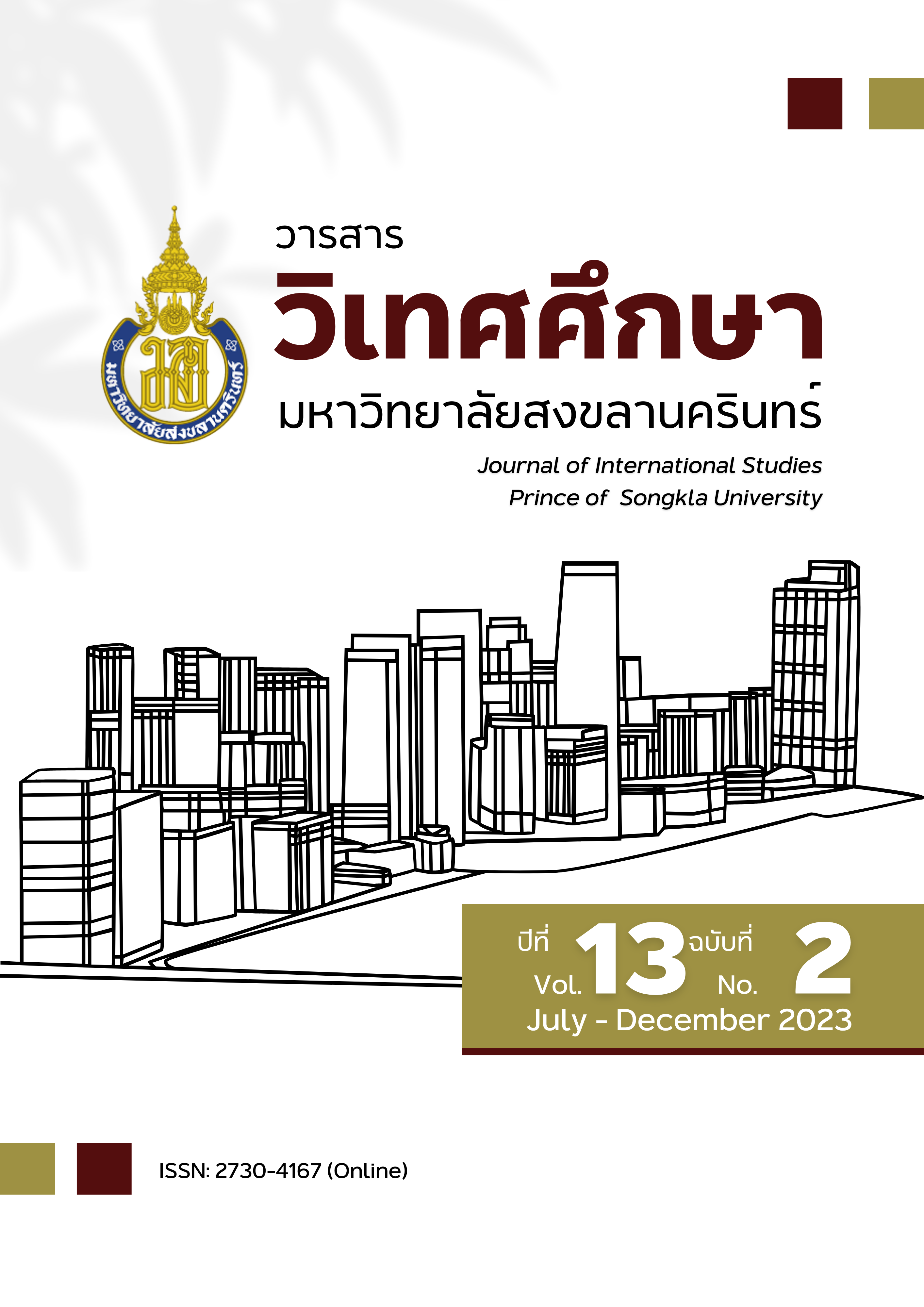The Role of Lautze Mosque: The Representation of Double Identity of Overseas Chinese Muslims in Jakarta and Bandung
Main Article Content
Abstract
The primary goals of this qualitative research are to understand the phenomenon of double identity that these mosques symbolize and to examine how Chinese culture has been adapted to Indonesian society through Chinese mosques in Jakarta and Bandung District. This study used participant observation and comprehensive discussions as its primary qualitative research techniques. In addition, the population and sample of this study are one of the heads of Lautze Mosque in Jakarta, one of the heads of Lautze Mosque 2 in Bandung, and four overseas Chinese Muslims in Jakarta and Bandung. There were three steps to analyze the data: first, the data from the information, related documents, and interviews will be analyzed using content analysis and analyzed using the theoretical framework for the rough study. Second, the researcher reviewed the information by using triangulation. Last, the data were analyzed thoroughly again and published. The Chinese mosques are part of maintaining and expressing Chinese culture. This phenomenon is present in the double identity form. The Chinese mosques represent the hybridity of culture and double identity through art, religious activities, and figures of symbols.
Chinese mosques are involved with various public and private organizations and have a role in Indonesian society through public benefit activities and social welfare. The double identity representation relates to interaction and negotiation in society between Indonesian and Overseas Chinese and the relationship between the majority group and the minority group.
Article Details

This work is licensed under a Creative Commons Attribution-NonCommercial-NoDerivatives 4.0 International License.
Statements and opinions expressed in articles herein are those of the authors and do not necessarily reflect the position of the editors or publisher.
Article, information, text, image, etc. which are published in Journal of International Studies, belong to Journal of International Studies. If anybody or any organization would like to use part or whole of them, they must receive written permission from Journal of International Studies before usage.
References
Barth, F. (1998). Ethnic groups and boundaries: The social organization of culture difference. Waveland Press.
Clark, W. H. (1958). The psychology of religion.
Cohen, A. (Ed.). (2014). Urban ethnicity (Vol. 3). Routledge.
Cohen, A. (2015). Two-dimensional man: An essay on the anthropology of power and symbolism in complex society. Routledge.
Creswell, J. W., & Creswell, J. D. (2017). Research design: Qualitative, quantitative, and mixed methods approaches. Sage publications.
Foucault, M. (1998). The history of sexuality: The will to knowledge. London: Penguin.
Foucault, M. (1978). The history of sexuality: An introduction. Ham- monsworth: Penguin.
Foucault, M. (1977). Discipline and Punish: The Birth of the Prison (trans. A. Sheridan; New York: Pantheon). Soft power and strategy, 49.
Geertz, C. (1973). The interpretation of cultures (Vol. 5019). Basic books.
Handinoto. (2009). Perkembangan Arsitektur Tionghoa di Indonesia. Dalam A. H. Kustara (Ed.). Peranakan Tionghoa Indonesia: Sebuah Perjalanan Budaya (hlm.70-92). Jakarta: PT Intisari Mediatama dan Komunitas-Lintas Budaya Indonesia.
Hoon, C. Y. (2021). Between Hybridity and Identity: Chineseness as a Cultural Resource in Indonesia. Contesting Chineseness: Ethnicity, Identity, and Nation in China and Southeast Asia, 167-182.
Hutnyk John. (2005). Diaspora & Hybridity, London: Sage.
ISLAM, M. P. (2020). ZAKIAH DARAJAT, MUSLIMAH PSIKOLOGI ISLAM DI INDONESIA. Nubar-Tokoh Pendidikan Dunia (Jabar# 59) Jilid 2, 27.
Koentjaraningrat, K. P. H. (1990). Pengantar Ilmu Antropolog, (Introduction to Anthropology). Jakarta, Indonesia: PT Rineka Cipta.
Qurtuby, S. A. (2003). Arus Cina-Islam-Jawa. Jogjakarta: Inspeal Ahimsakarya Press.
Tjahjana, C. (2013). Akulturasi Budaya dalam Arsitektur Bangunan Masjid Lautze 2 Bandung.
Turner, V. W. (2018). The drums of affliction: a study of religious processes among the Ndembu of Zambia. Routledge.
Tuner, Victor W. (1967). The Forest of Symbols: Aspects of Ndembu Ritual. Ithaco: Cornell University.
Tuner, Victor W. (1969). The Ritual Process: Structure and Anti-Structure. Chicago: Aldine Publishing Company


